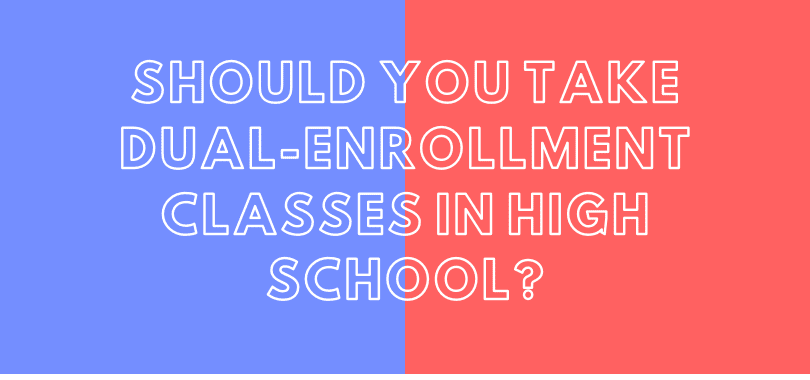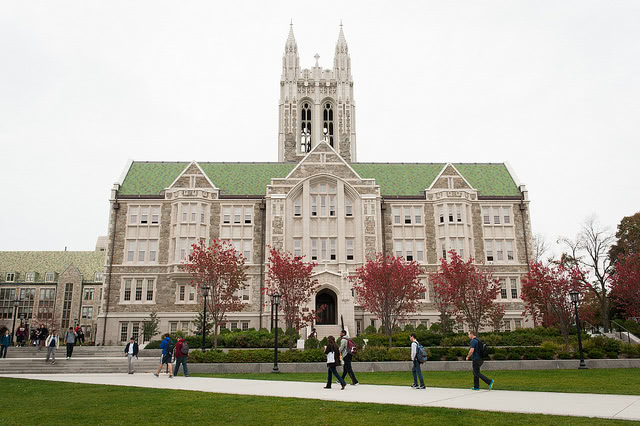Your college acceptance letter should contain detailed information about your financial aid package as well as the costs you’re expected to cover. One of the items you’ll find included in the list of costs is an enrollment deposit. You’ll also see that this money must be paid much before all other fees. So, what is an enrollment deposit?
Understanding how an enrolment deposit works and what are its implications is important.
What Is A College Enrollment Deposit?
A college enrollment deposit is a small fee that colleges ask students to make to ‘book their seat’ in their institution. Here’s how it works.
After assessing applications, colleges send out acceptance letters to students who would be the best fit for their institution. However, they know that some students who receive their acceptance letters may choose to study at another school that has accepted them. This means the one seat that was reserved for the student would go to waste for the entire academic year. To prevent this from happening, schools ask applicants to pay an enrolment fee, usually by May 1st.
The enrollment fee secures a seat for you at that particular college. The amount varies among schools. In most cases this amount is non-refundable but it does count toward your first tuition amount. If the school does not receive your enrollment deposit by the last date, they will un-reserve your seat and offer it to a student on their waitlist.
Here are a few important things you should know about enrolment deposits.
6 Important Things You Need To Know About Enrolment Deposits

1. Deposits are usually nonrefundable
Your college acceptance letter should state whether the enrollment deposit is refundable or not. In most cases, it isn’t refundable. This is because the purpose of the enrollment deposit is to secure your seat at that college. It ensures that you won’t back out and enroll elsewhere, letting that seat go to waste for the academic year. Refunding the deposit would make it pointless.
Read through the admission offer carefully and make a note of whether or not the enrollment deposit is refundable. But don’t rush to make the payment just yet. There are several other factors you need to take into consideration.
2. There is a due date for making the enrollment deposit
May 1st is widely considered as ‘Decision Day’. Most colleges will wait until this date to hear back from successful applicants. This is also the last date for paying the enrollment deposit. If a college hasn’t heard back from you or received the enrollment deposit by May 1st, they will give your seat to a waitlisted student.
If you’re waiting to hear back from your first-choice school, it helps to wait till a few days before the deadline to make this payment. There’s no benefit to submitting your payment early, except maybe a higher likelihood of being assigned your choice of dorm room.
While there’s no need to rush and make the deposit early if you’re undecided, that payment must reach the school before the deadline in order to secure your seat. Most colleges will not accept payments after the deadline. Only very few schools that have seats vacant may extend the deadline but that’s not a chance you want to take.
3. You must check your financial aid package before making the deposit
It is crucial to go through your financial aid package before submitting the enrollment deposit. You want to make sure that you can afford the cost of attending that college before committing to enrolling.
Your financial aid package will contain details of all the financial aid you’re being offered toward your tuition for one year. This includes scholarships, grants, federal student loans, and institutional aid. However, this is often not enough to cover the full cost of attendance. You will have to use your personal funds to cover the difference.
You want to make 100% sure you can afford to attend that college before submitting your enrollment deposit. Remember, it’s non-refundable. If you pay the money and then determine that the college is unaffordable, you’ll still forfeit the deposit. If the deadline is approaching and you haven’t received your financial aid package, reach out to the school and remind them. This is a busy time for schools’ admin office and things can get lost in the shuffle. Be proactive and take steps to ensure you receive your financial aid information early enough so you can make an informed decision.
4. Average Enrollment Deposit
This can vary widely from one college to another. The average enrollment deposit may range anywhere from a low of $100 to as much as $1,000. For example, Florida State University requires an enrollment deposit of $200, which is at the lower end. On the other hand, Villanova University asks for $1,000 as the enrollment deposit.
5. What to do if you can’t afford the enrollment deposit
Not everyone can afford the enrollment deposit for their preferred college. If you find yourself in this situation, you have two options. You can request the school’s financial aid for a fee waiver or to defer your payment.
Deferring the payment involves waiting for the financial aid to go through before submitting the deposit. This helps if you’re depending on financial aid to cover the various college costs. Some colleges will allow you to do this while they hold your spot.
Getting a fee waiver requires additional documentation to show proof of financial need. Contact your school at the earliest and ask them what documents they need to demonstrate financial need. You will need to submit the supporting paperwork before the due date in order to get the enrollment deposit waived.
Most important – You MUST put in either request well before the deadline. Your request will not be considered if it’s received after the due date. Also, schools may have different formalities for requesting deferment or fee waivers. Some schools may have late dates for these requests too. Make sure to reach out to your school’s financial aid office and ask about their requirements.
6. Don’t be tempted to double deposit
Double depositing refers to paying the enrollment deposits at two different schools. It can be tempting to do this if you’re not sure which school you want to attend and wish to keep both options open. If you have the funds and can afford to double deposit, why not, right?
Well, there are several things wrong with doing this. For one thing, it’s unethical to reserve your spot at two colleges as it deprives another student of getting the seat. Also, the fine print on the Common App (which you would have signed) states that students are not permitted to submit enrollment deposits at more than one school. More seriously, if a college finds out you’ve double deposited, they may withdraw your admission offer. To avoid getting into this predicament, you must do your research, explore all your options, and make your final college decision before the deposit deadline comes around.
There’s one exception to this rule as stated in the Guide to Ethical Practice In College Admission published by the NACAC. According to this guide, the only time it’s acceptable to double deposit is if you’re wait-listed at your preferred college. In this case, you submit the enrollment deposit to guarantee your seat at your backup college.
Once you’re taken off the waitlist and offered a firm spot, you must send an explanatory note to your backup college so they can offer the spot to another student. Whether or not you get the enrollment money back depends on the school’s refund policy.
Use College Raptor to discover personalized college matches, cost estimates, acceptance odds, and potential financial aid for schools around the US!
| Lender | Rates (APR) | Eligibility | |
|---|---|---|---|
 |
5.50%-16.12%* Variable
3.99%-15.61%* Fixed
|
Undergraduate and Graduate
|
VISIT CITIZENS |
 |
5.54% - 15.70% Variable
3.99% - 15.49% Fixed
|
Undergraduate and Graduate
|
VISIT SALLIE MAE |
 |
4.63% - 17.99% Variable
3.49% - 17.99% Fixed
|
Undergraduate and Graduate
|
VISIT CREDIBLE |
 |
6.00% - 13.75% Variable
3.99% - 13.75% Fixed
|
Undergraduate and Graduate
|
VISIT LENDKEY |
 |
5.66% - 14.72% Variable
3.69% - 14.56% Fixed
|
Undergraduate and Graduate
|
VISIT ASCENT |
 |
3.70% - 8.75% Fixed
|
Undergraduate and Graduate
|
VISIT ISL |
 |
5.62% - 16.85% Variable
3.69% - 16.49% Fixed
|
Undergraduate and Graduate
|
VISIT EARNEST |
 |
5.00% - 14.22% Variable
3.69% - 14.22% Fixed
|
Undergraduate and Graduate
|
VISIT ELFI |






